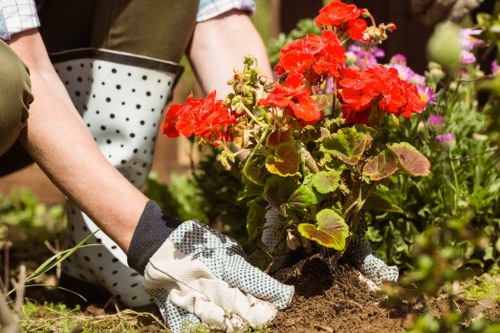Lawn Mowing Raynes Park: Your Comprehensive Guide to a Beautiful Lawn

Maintaining a lush, green lawn in Raynes Park doesn’t have to be a daunting task. Whether you’re a seasoned gardener or a beginner, understanding the best practices for lawn mowing can make all the difference. This guide offers expert tips and insights to help you achieve the perfect lawn, tailored specifically to the Raynes Park area.
Raynes Park boasts a vibrant community with diverse lawns, each requiring unique care. From the type of grass to the frequency of mowing, several factors influence how well your lawn thrives. In this article, we’ll explore effective lawn mowing techniques, recommended equipment, and seasonal tips to keep your lawn healthy all year round.
Proper lawn mowing not only enhances the aesthetic appeal of your property but also promotes healthy grass growth. By following the right steps, you can prevent common lawn issues such as weeds, pests, and diseases. Let’s dive into the essentials of lawn mowing in Raynes Park to ensure your green space remains immaculate and inviting.
Why Lawn Mowing is Important

Lawn mowing is a fundamental aspect of lawn care that offers numerous benefits beyond just appearance. Regular mowing helps maintain an even grass height, which is crucial for several reasons.
Firstly, mowing stimulates grass growth by encouraging the development of new shoots. This results in a thicker and more resilient lawn that can better withstand environmental stresses. Secondly, it helps control weeds by reducing their ability to flower and spread seeds.
Moreover, a well-mowed lawn improves air circulation and sunlight penetration, which are essential for healthy grass. It also minimizes the risk of pest infestations and diseases by removing excess thatch and debris. In summary, consistent lawn mowing is key to maintaining a vibrant and healthy green space in Raynes Park.
Choosing the Right Mowing Equipment

Selecting the appropriate mowing equipment is vital for achieving the best results. The type of mower you choose depends on the size of your lawn, the grass type, and your personal preferences.
For smaller lawns, a manual push mower or a cordless electric mower may suffice. These options are environmentally friendly and easy to maneuver. However, for larger lawns, a petrol-powered or battery-operated lawn mower is more efficient and time-saving.
Additionally, consider features such as adjustable cutting heights, mulching capabilities, and ease of maintenance. Investing in quality equipment ensures a clean cut and reduces the likelihood of damaging your grass. Regular maintenance of your mower, including sharpening blades and cleaning, also plays a crucial role in effective lawn mowing.
Types of Mowers
- Push Mowers: Ideal for small lawns, offering simplicity and ease of use.
- Electric Mowers: Quiet and eco-friendly, suitable for medium-sized lawns.
- Gas-Powered Mowers: Powerful and efficient, best for large lawns.
- Battery-Operated Mowers: Offer flexibility and reduced emissions, great for various lawn sizes.
Best Practices for Mowing Your Lawn

Adhering to best mowing practices ensures that your lawn remains healthy and aesthetically pleasing. Here are some essential tips to follow:
1. Mow at the Right Height: Different grass types require different mowing heights. Generally, it’s recommended to cut no more than one-third of the grass blade’s height at a time.
2. Mow When the Grass is Dry: Wet grass can clump and lead to uneven cuts. Waiting for a dry day ensures a cleaner mow and reduces the risk of disease.
3. Change Mowing Patterns: Varying the direction of your mowing each time prevents grass from leaning and promotes upright growth.
Seasonal Mowing Tips
- Spring: Begin regular mowing as the grass starts to grow. Remove any debris and dethatch if necessary.
- Summer: Maintain a consistent mowing schedule and ensure the mower blades are sharp.
- Autumn: Continue mowing until the grass stops growing, then prepare for winter by reducing mowing frequency.
- Winter: Minimize mowing and focus on lawn protection, such as applying mulch.
Local Considerations in Raynes Park

Raynes Park’s climate and soil conditions play a significant role in lawn care routines. The mild climate allows for year-round grass growth, but it also requires attentive care to maintain its health.
Soil quality in Raynes Park varies, so it’s essential to conduct a soil test to determine its pH and nutrient levels. This information helps in selecting the right type of fertilizer and amendments to promote optimal grass growth.
Additionally, local regulations and community guidelines may influence lawn care practices, such as noise restrictions for mowing times and proper disposal of grass clippings. Being aware of these factors ensures that your lawn care routine is both effective and compliant with local standards.
10-15 Nearby Areas to Raynes Park
Understanding the surrounding areas of Raynes Park can provide additional insights into maintaining your lawn. Each nearby area has unique characteristics that can influence lawn care practices:
- Southfields: Known for its spacious gardens, ideal for larger lawns requiring robust mowing solutions.
- Kingston Vale: Features tight residential spaces, suitable for compact and efficient mowers.
- South Keston: Offers a mix of flat and sloped lawns, necessitating versatile mowing equipment.
- Queens Ride: Home to many communal gardens, promoting eco-friendly mowing practices.
- Stoneleigh: Rich in greenery, emphasizing the importance of regular mowing to maintain beauty.
- Berryfield: Known for its community parks, encouraging the use of noise-reduced mowers.
- Pewit Grove: Features sandy soils, requiring specific fertilization and mowing techniques.
- Tooting: Diverse lawn types, from formal gardens to wildflower areas, each needing tailored care.
- Sunnyside: High foot traffic lawns, benefiting from frequent mowing to keep grass resilient.
- Stanwell: Combines residential and commercial lawns, requiring flexible mowing schedules.
- West Keston: Steep inclines in some areas, necessitating equipment with better traction.
- Fairmile: Incorporates ornamental plants, requiring careful mowing to avoid damage.
- Hayes Orchard: Features fruit trees, integrating lawn mowing with orchard maintenance.
- Northcote: Large open spaces, perfect for trialing new mowing techniques.
- Cherry Hinton: Varied soil types, demanding customized lawn care approaches.
Common Lawn Problems and Solutions
Even with the best mowing practices, lawns can face challenges. Identifying and addressing common lawn problems ensures your grass remains healthy and vibrant.
Weed Infestations: Weeds compete with grass for nutrients and water. Regular mowing at the correct height can suppress weed growth. Additionally, using pre-emergent herbicides can prevent weed seeds from germinating.
Pest Damage: Insects like grubs and sod webworms can damage your lawn. Monitoring for signs of pests and applying appropriate treatments can control infestations effectively.
Disease Prevention
- Fungal Infections: Ensure adequate airflow by removing debris and avoiding overwatering.
- Bacterial Diseases: Maintain proper mowing heights and avoid cutting too short to reduce stress on the grass.
- Lawn Thatch: Remove excess thatch through dethatching to prevent diseases and encourage healthy growth.
Eco-Friendly Lawn Mowing Practices
Adopting eco-friendly mowing practices benefits both your lawn and the environment. Here are some sustainable approaches to consider:
Mulching: Mulching mowers finely chop grass clippings and return them to the lawn, providing natural nutrients and reducing the need for fertilizers.
Electric Mowers: Using electric or battery-operated mowers reduces carbon emissions and noise pollution, making them a greener choice.
Water Conservation: Mow your lawn at optimal heights to retain moisture and reduce the need for frequent watering, conserving water resources.
Composting:
- Collect grass clippings and organic waste to create compost, enriching the soil naturally.
- Avoid chemical fertilizers by using compost to maintain soil health.
- Implement rainwater harvesting to provide sustainable irrigation for your lawn.
Hiring Professional Lawn Mowing Services
While DIY lawn mowing is feasible, hiring professional services in Raynes Park can offer numerous advantages. Professional landscapers have the expertise, equipment, and resources to maintain your lawn efficiently.
They provide regular maintenance schedules, ensuring your lawn is mowed at optimal times. Additionally, professionals can identify and address issues such as pests, diseases, and soil deficiencies promptly.
Outsourcing lawn care allows you to focus on other activities while ensuring your lawn remains in top condition. It’s a worthwhile investment for those seeking hassle-free and high-quality lawn maintenance in Raynes Park.
Conclusion
Maintaining a beautiful lawn in Raynes Park is achievable with the right knowledge and practices. From selecting appropriate mowing equipment to understanding local conditions and adopting eco-friendly methods, every aspect plays a role in your lawn’s health and appearance.
By following the tips outlined in this guide, you can enjoy a vibrant, lush lawn that enhances your property’s curb appeal and provides a pleasant outdoor space for relaxation and activities.
Remember, consistent care and attention are key to achieving and maintaining the perfect lawn in Raynes Park. Whether you choose to mow yourself or hire professionals, prioritizing your lawn’s needs will yield rewarding results.
Frequently Asked Questions
1. How often should I mow my lawn in Raynes Park?
Mowing frequency depends on the grass growth rate, which varies with the season. Generally, during the growing season (spring and summer), mowing once a week is recommended. In cooler months, reduce the frequency to bi-weekly or as needed.
2. What is the best time of day to mow the lawn?
The best time to mow your lawn is in the late morning after the dew has dried but before the heat of the day. This timing helps the grass recover quickly and reduces stress.
3. How high should I set my mower for different grass types?
Different grass types require different mowing heights. For example, Bermuda grass thrives at 1-2 inches, while fescue prefers 2.5-3 inches. It’s essential to research your specific grass type for optimal results.
4. Can I leave grass clippings on the lawn after mowing?
Yes, leaving grass clippings can be beneficial as they act as natural fertilizer. However, ensure the clippings are not too thick to avoid smothering the grass. Mulching mowers are ideal for this purpose.
5. When is the best time to hire a professional lawn mowing service?
Hiring a professional is ideal if you lack the time, equipment, or expertise to maintain your lawn. It’s especially beneficial during peak growing seasons or if you encounter persistent lawn problems.